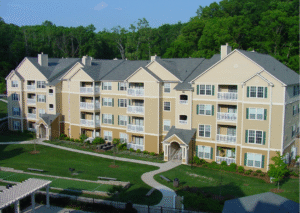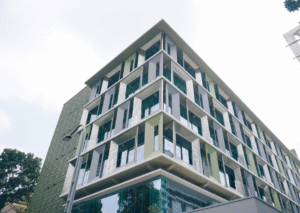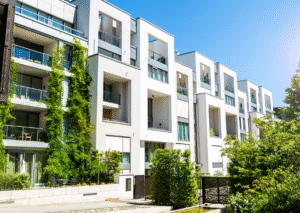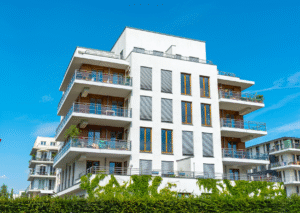What Are Non-Owner Occupied Loans and Why Do They Matter?
Non-owner occupied loans are financing solutions specifically designed for properties where the borrower does not intend to live. These properties are typically purchased for investment purposes, such as rental income, flipping for profit, or long-term appreciation. The Federal Housing Finance Agency defines these properties as those that are “not the borrower’s principal residence” and are therefore assessed differently from primary homes in terms of risk and qualification requirements (FHFA, 2023).
For investors, these loans matter because they allow access to capital that might not be available through traditional residential mortgages. Since the borrower does not live in the property, lenders rely more on the asset’s income-generating potential, which changes how the loan is structured, underwritten, and priced.
How Do Terms Differ Between Owner-Occupied and Non-Owner Occupied Loans?
The difference begins with risk perception. Lenders view non-owner occupied properties as higher-risk investments because borrowers may be less likely to prioritize repayment if faced with financial hardship. As a result, these loans often have:
- Higher Interest Rates – Usually 0.5% to 1% higher than owner-occupied loans.
- Larger Down Payments – Often 20% to 25% minimum, compared to as little as 3% for primary residences.
- Stricter Qualification Standards – Stronger credit profiles, stable income history, and sometimes evidence of prior real estate investment experience.
For example, the Consumer Financial Protection Bureau (CFPB) notes that investment property loans are not subject to some consumer protections that apply to primary residences, meaning borrowers need to be extra diligent when reviewing terms (CFPB, 2024).
What Makes These Loans Riskier and How Do Lenders Adjust?
The Federal Reserve Bank of Richmond explains that non-owner occupied loans are riskier for lenders due to higher default rates during market downturns. Since investors may prioritize personal housing costs over investment property payments, lenders take extra precautions (Richmond Fed, 2022).
Lenders adjust by:
- Requiring Higher Loan-to-Value (LTV) Ratios – Typically capped at 75%-80%.
- Demanding Stronger Debt Service Coverage Ratios (DSCR) – Many lenders require a DSCR of 1.2 or higher.
- Implementing Reserve Requirements – Investors may need several months’ worth of mortgage payments in liquid reserves.
These measures protect lenders while ensuring that only financially prepared investors can access these loan products.
Can You Use Non-Owner Occupied Renovation Loans to Maximize Value?
Yes, and this is where strategic investors can excel. Renovation loans for non-owner occupied properties, sometimes called Fix and Flip Loans or Rehab Loans, provide funding not only for the purchase price but also for property improvements.
According to the U.S. Department of Housing and Urban Development (HUD), improving property quality increases both market value and rental potential, which can significantly impact return on investment (HUD, 2023). By using a renovation loan:
- You can increase the property’s After-Repair Value (ARV).
- You may attract higher-quality tenants.
- You can position the property for a profitable resale in a shorter timeframe.
This strategy is particularly effective when paired with services such as those offered by No Limit Investments, which provides Fix & Flip loan solutions tailored to investor timelines and goals.
What Documents, Scores, and Ratios Do Lenders Focus On?
Getting approved for a non-owner occupied loan requires a well-prepared application. Based on industry guidelines and lender standards, here’s what to expect:
- Credit Score – Many lenders look for a score of 680 or higher.
- Income Documentation – W-2s, tax returns, or proof of rental income for other properties.
- Property Appraisal – Establishes market value and projected rental income.
- Debt Service Coverage Ratio (DSCR) – Property income must sufficiently cover loan payments.
- Reserves – Typically three to six months of mortgage payments in savings or liquid accounts.
The Federal Deposit Insurance Corporation (FDIC) emphasizes that well-documented loan applications are critical for reducing underwriting risk and expediting approvals (FDIC, 2022).
How Can You Strategically Use These Loans for Investment Growth?
Investors can leverage non-owner occupied loans in multiple ways:
- Portfolio Diversification – Spread investments across single-family homes, multifamily units, and short-term rentals.
- Cash-Out Refinancing – Tap into equity from one property to finance another.
- BRRRR Strategy – Buy, Rehab, Rent, Refinance, Repeat.
- Market Timing – Acquire properties in emerging markets before prices peak.
Services like those offered by No Limit Investments help streamline these strategies by providing flexible loan terms, investor-focused underwriting, and funding designed to scale real estate portfolios quickly.
What Services Can Support Your Journey—Including from No Limit Investments?
No Limit Investments offers specialized services to help investors succeed with non-owner occupied loans:
- Real Estate Financing Solutions – Loans for Fix & Flip, Buy & Hold, DSCR, and more.
- Business Credit Facilities – Flexible credit lines for operational or acquisition needs.
- Credit and Debt Advisory – Guidance to improve credit profiles and manage leverage.
- Growth and Development Services – Strategic planning for scaling investment portfolios.
By combining loan expertise with business growth support, they provide a comprehensive framework for long-term investor success.
How Can You Avoid Common Pitfalls and Stay Smart?
Mistakes with non-owner occupied loans can be costly. Common pitfalls include:
- Underestimating Renovation Costs – Always get multiple bids and factor in contingencies.
- Overleveraging – Maintain healthy debt ratios to avoid liquidity crunches.
- Ignoring Market Trends – Monitor rental demand, vacancy rates, and local regulations.
- Skipping Professional Guidance – Work with experienced financing specialists.
A disciplined approach—paired with the right financing partner—helps avoid these issues and ensures steady investment growth.
Why Should You Act Now?

The right non-owner occupied loan can be the difference between a stalled portfolio and accelerated growth. Whether you’re flipping, renting, or building long-term equity, partnering with an experienced financing provider makes the journey smoother and more profitable.
Visit No Limit Investments today to explore tailored non-owner occupied loan solutions, gain access to expert credit and investment guidance, and secure funding designed to match your real estate ambitions. Book an appointment!
Final Thoughts
Navigating financing for non-owner occupied loans requires knowledge, preparation, and the right partnerships. By understanding loan structures, qualification standards, and strategic uses, investors can maximize returns while minimizing risk. With a reliable partner like No Limit Investments, success in real estate investing becomes not just possible—but highly achievable.
Works Cited
Consumer Financial Protection Bureau. “What Is a Non-Owner Occupied Loan?” CFPB, 2024, www.consumerfinance.gov.
Federal Deposit Insurance Corporation. “Credit Risk Management for Real Estate Lending.” FDIC, 2022, www.fdic.gov.
Federal Housing Finance Agency. “Investment Property Lending Guidelines.” FHFA, 2023, www.fhfa.gov.
Richmond Federal Reserve Bank. “Mortgage Risk and Default Trends.” Federal Reserve Bank of Richmond, 2022, www.richmondfed.org.
U.S. Department of Housing and Urban Development. “Rehabilitation Mortgage Insurance Program.” HUD, 2023, www.hud.gov.
Frequently Asked Questions
- What is a non-owner occupied loan?
A non-owner occupied loan is financing for a property the borrower does not live in, usually purchased for rental income, flipping, or long-term investment purposes. - How do non-owner occupied loan terms differ from owner-occupied loans?
These loans often have higher interest rates, larger down payment requirements (20%–25%), and stricter qualification standards due to increased lender risk. - Can I use a non-owner occupied renovation loan to improve property value?
Yes. Renovation loans can fund both the purchase and improvements, increasing the property’s after-repair value (ARV) and rental potential. - What do lenders look for when approving a non-owner occupied loan?
Lenders typically review your credit score (680+), income documentation, property appraisal, debt service coverage ratio (DSCR), and available reserves. - How can No Limit Investments help with non-owner occupied loans?
They offer real estate financing solutions, business credit facilities, credit and debt advisory, and growth planning services to help investors scale effectively.







